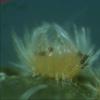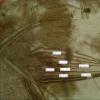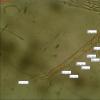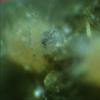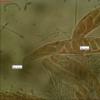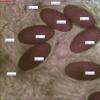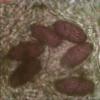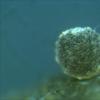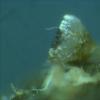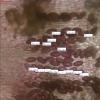
09-12-2025 12:06
 Andgelo Mombert
Andgelo Mombert
Bonjour,Je recherche l'article concernant Hypobryo

12-12-2025 18:39
Mirek GrycHello everyone.Macrofeatures similar to Mollisia b

07-12-2025 16:07
Arnold BüschlenHallo, ich habe in einer Moos-Aufsammlung (epiphy

08-12-2025 21:04
Mark Stevens"Hello everyone,I'm relatively new to microscopy (

08-12-2025 18:59
 Lothar Krieglsteiner
Lothar Krieglsteiner
.. found by a seminar-participant, I do not know t

08-12-2025 17:37
 Lothar Krieglsteiner
Lothar Krieglsteiner
20.6.25, on branch of Abies infected and thickened
Lasiobolus macrotrichus Rea
Joop van der Lee,
11-03-2013 19:02
 Found on deer dung, colour of fruitbody bright orange with white hairs.
Found on deer dung, colour of fruitbody bright orange with white hairs.Hairs: pointed or rounded at the top, thick walls, no septa, 101.71-156.46x7.33-7.98 um. Sometimes the hairs had a constriction near the top.
Parafyses: Long straight and pointed at the top
Asci: 183.74x13.08 um containing 8 spores.
Spores: Hyaline 16.93-19.20x7.65-8.35 um thick walls.
These specimen were always accompanied by an ascobolus that appeared next to the mentioned specimen above.
Fruitbody: white, rounded with dark brown ripe spores.
Asci: 146.6x25.98 um containing 8 spores.
Spores: 22.47-25.93x10.69-12.22 um
Ascobolus is determined as Ascobolus Sacchariferus.
Only fruitbodies that are small differ from the disk in the measurement of asci and spores.
Spores in the disk are smaller in size than those of the younger rounded ones.
Measuring 15-17x7.8-9 um.
The last picture is an update of the ascobolus in a young rounded state.
Lasiobolus intermedius also has a pure white form
René Dougoud,
11-03-2013 20:24
Re : Cheilymenia or lasiobolus?
Cher Collègue,
Il y a deux espèces de deux genres distincts, Lasiobolus sp, avec les poils non septés et Ascobolus sp. avec les ascospores violettes et striées. Il est très fréquent de trouver ces deux genres sur le même substrat et les ascospores de l'une sur l'autre. Ce serait trop facile sans cela !
René
Il y a deux espèces de deux genres distincts, Lasiobolus sp, avec les poils non septés et Ascobolus sp. avec les ascospores violettes et striées. Il est très fréquent de trouver ces deux genres sur le même substrat et les ascospores de l'une sur l'autre. Ce serait trop facile sans cela !
René
Peter Welt,
11-03-2013 21:23

Re : Cheilymenia or lasiobolus?
Lasiobolus intermedius Bezerra & Kimbr.
Peter
Peter
Joop van der Lee,
12-03-2013 12:40

Re : Cheilymenia or lasiobolus?
Thx Peter
Gr. Joop
Joop van der Lee,
14-03-2013 19:29

Re : Cheilymenia or lasiobolus?
Allo René,
Je m' excuse pour la tard réaction à votre explication de mon question.
Je n' ai toujour pas une identification de l' ascobolus, les spores ressemblent beaucoup les spores d' ascobolus furfuraceus mais en moment je ne suis pas sure.
Joop
Je m' excuse pour la tard réaction à votre explication de mon question.
Je n' ai toujour pas une identification de l' ascobolus, les spores ressemblent beaucoup les spores d' ascobolus furfuraceus mais en moment je ne suis pas sure.
Joop
Joop van der Lee,
18-03-2013 17:06

Re : Cheilymenia or lasiobolus?
Are you sure it is Lasiobolus Intermedius Peter?
I do have some new measurements and they do'nt directly match to L. Intermedius or L. Ciliatus.
The length and width of the hairs 545-680x40.14-43.70 um, these hairs do have sharp and rounded tops, thickness of the walls was 5.59-5.76 um.
The length and width of the asci 207x11.91 um.
Spores 17.55-20.61x7.64-8.66 um with thick walls especially when young.
Also these specimen do have a white form with the same characteristics.
I do have some new measurements and they do'nt directly match to L. Intermedius or L. Ciliatus.
The length and width of the hairs 545-680x40.14-43.70 um, these hairs do have sharp and rounded tops, thickness of the walls was 5.59-5.76 um.
The length and width of the asci 207x11.91 um.
Spores 17.55-20.61x7.64-8.66 um with thick walls especially when young.
Also these specimen do have a white form with the same characteristics.
Peter Welt,
19-03-2013 09:25

Re : Cheilymenia or lasiobolus?
Hi Joop,
After your spores way, I was sure. If every day you're
experiencing a different spores size, it can also be something else.
After your spores way, I was sure. If every day you're
experiencing a different spores size, it can also be something else.
Here's a part of my key.
3a Sporenlänger als 20 µm 7
7 Sporen nicht subfusiform 8
8a Sporen kleiner 9
9b Asci zylindrisch, Sporen uniseriat
10a Sporen 20-23 x 8,5-9,5, Harre 500-900 (1000) µm lang = Lasiobolus macrotrichus Rea
probably now Lasiobolus macrotrichus Rea
Peter
Joop van der Lee,
19-03-2013 11:57

Re : Cheilymenia or lasiobolus?
Is there a possibility that I can download your key Peter?
Joop
Joop
